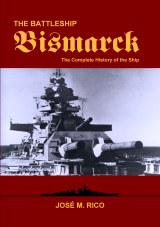 |
Home Intro Technical History Crew Models Gallery Kriegsmarine Archives More Forum
 UPDATES UPDATES |
Conference of the Commander in Chief, Navy, with the Führer in the afternoon of 21 June 1941.
| Present: |
Chief of the OKW [Generalfeldmarschall Keitel] General Jodl Kapitän zur See von Puttkamer also Professor Speer during discussion of point 1. |
1. The Commander in Chief, Navy reports on a plan for a large shipyard at Trondheim on the Gulosen Fjord. The Führer agrees and instructs Professor Speer to investigate the surrounding country with a view to building a German city.
2. The Commander in Chief, Navy, using a map, shows the encounter of U203 with the U.S. battleship TEXAS and a U.S. destroyer in the closed area: The ships were sighted about ten miles inside the boundary of the closed area; U203 chased and attempted to attack them as far as about 140 miles to the northeast and back within the closed area; then the ships left the area on a southwest course. No opportunity to attack occurred on account of zig-zag courses and unfavorable weather. The Commander in Chief, Navy, is of the opinion that this incident as well as that of the ROBIN MOOR is welcome, because the character of the proceedings make it quite clear to the U.S.A. that the warning was meant in earnest. He states that where the U.S.A. is concerned firm measures are always more effective than apparent yielding. In the case of the ROBIN MOOR, the Commander in Chief, Navy, had already given instructions that, for the present, the Führer wishes to avoid incidents with U.S. warships and merchant ships outside the closed area under all circumstances. For the closed area, clearly defined orders will be necessary which will not involve submarines in confused and dangerous situations, and which can be carried out. By day under normal conditions a submarine can recognize U.S. battleships and cruisers and avoid attack. By night, on the other hand, no such guarantee can be given. An appropriate order is therefore not possible. The Commander in Chief, Navy proposes a 50 or 100 mile strip inside the boundary of the closed area, inside which attacks on U.S. warships should be avoided.
The Führer declares in detail that until operation "Barbarossa" is well under way he wishes to avoid any incident with the U.S.A. After a few weeks the situation will become clearer, and can be expected to have a favorable effect on the U.S.A. and Japan; America will have less inclination to enter the war, due to the threat from Japan which will then increase. If possible, therefore, in the next weeks all attacks on naval vessels in the closed area should cease, especially since the past few months such attacks have been exceptions in any case.
The Commander in Chief, Navy, agrees that such an order could be given; all the same, at night naval vessels, e.g., those escorting a convoy, might be hit unintentionally, like in the MALAYA case. Such a ruling would therefore provide no guarantee either.
The Führer decides that this order must be issued nevertheless, so that incidents are eliminated as far as possible.
The Commander in Chief, Navy, issues the following order to the Commander in Chief, U-boats, with instructions to inform the submarines of the reason for this order:
"Berlin 21 June 1941
To:1. Submarine Division of the Seekriegsleitung
2. OKW, operations Staff, National Defense
Subject: Offensive operations against naval vessels.
I. Today the Commander in Chief, Navy, conferred with the Führer on this subject.
II. Result: The Führer desires absolutely to avoid any possibility of incidents with the U.S.A. until the development of operation ”Barbarossa" becomes clearer, i.e., for a few weeks.
III. The following is therefore ordered:
1. For the time being no attacks on naval vessels are to take place either inside or outside the closed area.
2. The only exceptions to this are ships definitely recognized as enemy ones, from cruisers upwards (cruisers, battleships, and aircraft carriers).
IV. (Addition for the Commander in Chief, U-boats, only:)
The Commander in Chief, Navy, desires that the explanation of these orders as under Paragraph II be included when the order is transmitted to the submarines, in order to acquaint the commanders with the reason for these restrictive orders.
(Addition for the OKW only, omitting Paragraph IV:)
Attention is drawn to the necessity for similar orders to the Luftwaffe also."

| Home Guestbook Quiz Glossary Help us Weights & Measures Video Credits Links Contact |
